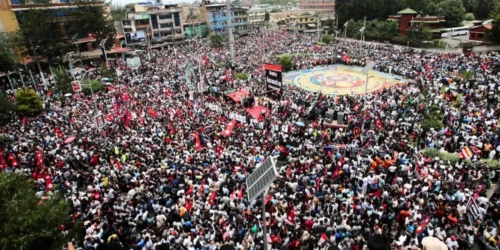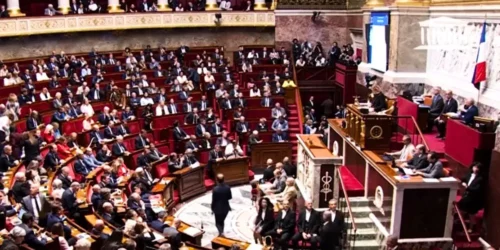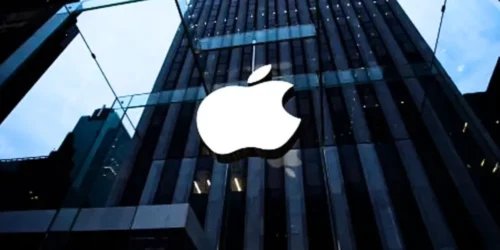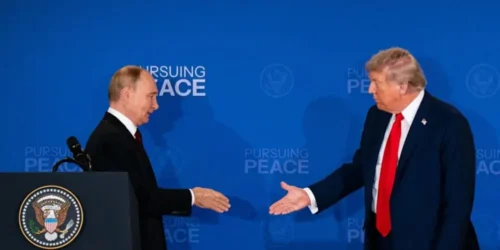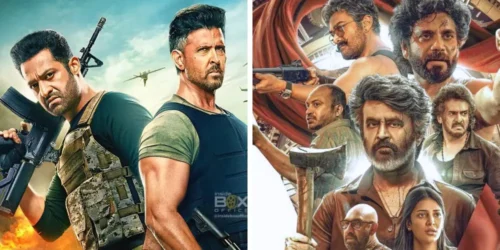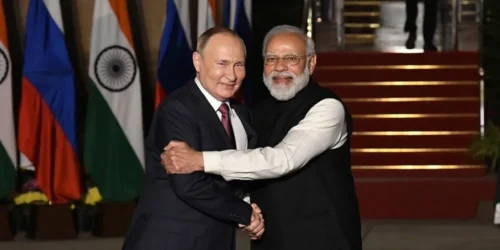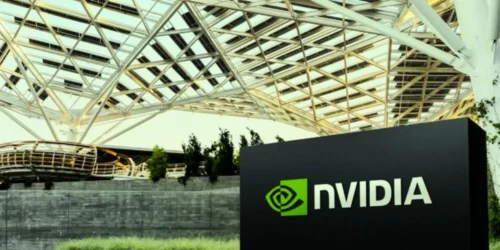They are more than characters. They are modern mythology. Superman. The immigrant child sent from a dying world, a symbol of hope and ultimate goodness, the blueprint for every superhero that followed. Batman. The mortal man who turned childhood trauma into an engine for justice, a symbol of human will pushed to its absolute limit. Wonder Woman. The Amazonian demigod, an ambassador of peace and truth, a warrior who embodies compassion as much as strength.
These are not just heroes; they are archetypes. They are the sun, the moon, and the stars of the comic book cosmos. Their logos are recognized in every corner of the globe, symbols as potent as any national flag or religious icon. For decades, they have been the undisputed royalty of popular culture. So, let’s ask the question that has haunted Hollywood for the past decade: Why has it been so damn hard to get them to play together on screen?
This is the central paradox, the grand, frustrating tragedy of the DC Extended Universe (DCEU). While its chief rival, Marvel Studios, was patiently assembling a coherent, beloved, and ludicrously profitable cinematic universe from a roster of B-list characters, Warner Bros. and DC Films, armed with the most iconic heroes in history, stumbled. They lurched from one creative vision to another, produced wildly divisive films, and created a cinematic “universe” that often felt more like a fractured multiverse of conflicting tones and abandoned storylines.
The story of the DCEU is not a simple tale of failure. It’s far more complex than that. It is a fascinating, often heartbreaking case study in squandered potential. It’s a story about the clash between art and commerce, the dangers of reactive decision-making, and the weight of legacy. It’s about a studio that owned the Parthenon but couldn’t figure out how to build a temple.
To dissect this history is to understand the pressures of the modern blockbuster, the passion of fan culture, and the critical importance of a singular, guiding vision. This is the story of how the gods of our childhood were brought to the screen, only to be broken, rebooted, and ultimately reborn. It is a cautionary tale written in spandex and shadows.
The Long Shadow – The World Before the Universe
Before we can diagnose the ills of the DCEU, we must understand the ghosts that haunted its birth. In the early 2000s, long before anyone dared to dream of a shared universe, DC’s Titans reigned in separate, self-contained kingdoms. And one of them was ruled by a director who would change everything: Christopher Nolan.
Nolan’s Dark Knight Trilogy (2005-2012) was more than just a successful series of Batman films. It was a paradigm shift. With Batman Begins, Nolan stripped the character of his comic book camp and gothic fantasy, re-grounding him in a world of plausible realism. This was not a world of super-powers and alien invasions; it was a world of corporate corruption, organized crime, and urban decay. Batman’s gadgets were military-grade prototypes. His suit was tactical armor. His city, Gotham, felt like a slightly more corrupt Chicago.
The trilogy reached its zenith with The Dark Knight (2008), a film that transcended the superhero genre entirely. It was a sprawling crime epic, a post-9/11 allegory about chaos and order, elevated by Heath Ledger’s anarchic, terrifying, and posthumously Oscar-winning performance as the Joker. The film was a critical and commercial colossus. It didn’t just prove that comic book movies could be serious; it proved they could be prestige cinema.
This triumph cast a long, dark shadow over everything that would come from DC. Nolan’s grounded, gritty, and somber tone became, in the eyes of many studio executives, the “correct” way to do DC. It was a powerful, but ultimately creatively limiting, legacy. It suggested that DC’s strength lay in deconstruction and realism, a stark contrast to the colorful, earnest world that Marvel was beginning to build.
While Batman thrived in the shadows, his solar-powered counterpart languished. Bryan Singer’s Superman Returns (2006) was the antithesis of Nolan’s approach. It was a work of deep, nostalgic reverence, a spiritual sequel to Richard Donner’s beloved Superman: The Movie (1978). Singer lovingly recreated the aesthetic, the score, and the earnest, Boy Scout morality of the Christopher Reeve era. But in a post-9/11, post-Nolan world, this nostalgia felt inert to many. The film was criticized for its lack of action and its melancholic, almost passive hero. It performed adequately but failed to reignite the franchise.
So, as Marvel Studios prepared to assemble its Avengers, DC was left with a conundrum. Its biggest star was a hyper-realistic, street-level vigilante who explicitly did not exist in a world of super-powers. Its other icon was perceived as an outdated relic, too cheesy for modern audiences. The studio had two successful but opposed blueprints. When the time came to build their universe, they would try to weld them together, and the cracks would begin to show immediately.
The Original Sin – The Birth of a Divisive Superman
The first official shot of the DC Extended Universe was fired in 2013 with Man of Steel. Warner Bros. handed the keys to the kingdom to two men: director Zack Snyder, a visual stylist renowned for his hyper-kinetic, graphic-novel-come-to-life aesthetic in films like 300 and Watchmen, and producer Christopher Nolan, who was brought on to lend his credibility and serious-minded approach to the project.
The goal was clear: do for Superman what Batman Begins did for Batman. They would drag the character into the 21st century, shedding the bright primary colors and unflappable optimism for a more muted, introspective, and conflicted hero. On paper, the approach was sound. The execution, however, would become the foundational, polarizing text of the entire DCEU.
Man of Steel presented a Superman for a cynical age. This was not a hero who arrived fully formed. He was an outcast, a wanderer, haunted by his immense power and unsure of his place in the world. Jonathan Kent, his adoptive father, taught him not to be a beacon of hope, but to hide his abilities, fearing how the world would react. The film was visually stunning, with Snyder’s operatic action sequences capturing the terrifying, god-like power of Kryptonians in a way never seen before. The fight between Superman and General Zod was not a clean, heroic brawl; it was a disaster movie, a cataclysm that leveled half of Metropolis.
And then came the moment that would define the next decade of debate: the ending. Pinned down by Zod, who threatens to incinerate a family with his heat vision, Superman, with a scream of anguish, snaps his enemy’s neck.
For half the audience, this was a powerful, tragic moment. It was the ultimate “no-win scenario,” forcing a nascent hero to make an impossible choice that would forever shape his moral code. It was a bold deconstruction of the character’s famous “no-kill” rule, showing the brutal reality of what it would take to stop a god.
For the other half, it was blasphemy. This was not their Superman. Superman, they argued, always finds another way. He is the symbol of absolute morality, the one who inspires us to be better precisely because he holds to his ideals even when it seems impossible. To them, the massive, unaddressed collateral damage of the final battle and the neck-snap was a fundamental misreading of the character’s core ethos. It was Batman’s brutal pragmatism that was forced onto the Man of Tomorrow.
This single creative choice became the DCEU’s original sin. It instantly cleaved the potential audience in two. It established a dark, somber, and violent tone that would hang over the entire franchise. The universe was born not in a moment of collective triumph, like The Avengers, but in a storm of controversy. And the studio, seeing the box office returns but also hearing the roar of debate, made its first critical, reactive decision. Instead of letting this new Superman breathe and develop, they decided to double down on the darkness and rush headlong into a confrontation.
The Mad Dash – Batman v Superman and the Folly of Impatience
Marvel Studios took four years and five solo films to build to The Avengers. They patiently introduced their heroes, developed their personalities, and taught the audience to love them before they ever teamed up. Warner Bros. saw the billion-dollar success of that film and decided they didn’t have time for patience. They wanted their big crossover event, and they wanted it now.
The result was Batman v Superman: Dawn of Justice (2016), a film whose unwieldy title perfectly reflected its overstuffed, chaotic nature. This was not just a sequel to Man of Steel. It was also a full Batman reboot, the introduction of Wonder Woman, a backdoor pilot for Justice League, and a philosophical treatise on the nature of power. It was a film trying to be five different things at once, and it buckled under the weight of its ambition.
Snyder, fully unleashed, leaned into the deconstructionist themes. He presented a world terrified and divided by the existence of Superman. And into this world, he introduced his Batman. Ben Affleck’s take on the character was brilliant in isolation—an older, broken, and brutally violent Dark Knight, scarred by twenty years of war on crime and traumatized by the destruction he witnessed in Metropolis. This Batman saw Superman not as a hero, but as an existential threat, a weapon that had to be neutralized.
The film was a visual feast of grim, gothic imagery. But its tone was relentlessly, oppressively bleak. It was a story about two of the most beloved heroes in history who spend the entire movie hating each other, manipulated by a twitchy, neurotic Lex Luthor. The “v” in the title was not just a marketing gimmick; it was the film’s entire thesis. It sought to break these heroes down before they had ever truly been built up in the audience’s eyes.
The narrative logic was often baffling, culminating in the infamous “Martha” moment. As Batman stands poised to kill Superman with a Kryptonite spear, Superman rasps, “You’re letting him kill Martha.” This, of course, is the name of Superman’s mother, and also the name of Batman’s murdered mother. The coincidence snaps Batman out of his murderous rage, realizing Superman’s humanity. On paper, it’s a thematic connection. On screen, it played as a clumsy, unintentionally hilarious deus ex machina that short-circuited the entire emotional conflict.
The film ended with another shocking decision: the death of Superman. In only his second cinematic appearance, the universe’s flagship hero sacrificed himself to kill the monster Doomsday. It was a move intended to be epic and tragic, but for many, it felt unearned and hollow. We had barely gotten to know this Superman, let alone mourn him.
The reaction to BvS was even more vitriolic than the one to Man of Steel. Critics savaged it for its ponderous tone and convoluted plot. The audience remained deeply divided. The film was a financial success, but a deeply disappointing one, failing to crack the billion-dollar mark that was seen as its benchmark. The writing was on the wall: the dark, deconstructionist path was alienating the mainstream audience. The studio, once again, panicked. And their panicked interventions would lead to an era of creative chaos.
The Whiplash Years – A Universe at War With Itself
The critical drubbing of Batman v Superman sent a shockwave through Warner Bros. The executives, who had previously endorsed Snyder’s dark vision, now saw it as a liability. Their attempts to course-correct, however, were not guided by a new, coherent creative strategy, but by a series of frantic, short-sighted reactions. This led to a period of creative whiplash, where the tone and direction of the universe could shift violently from one film to the next, sometimes even within the same film.
Suicide Squad (2016)
Director David Ayer had made a gritty, dark crime film about a group of super-villains forced to do the government’s dirty work. But after the success of the film’s first trailer—a snappy, colorful montage set to Queen’s “Bohemian Rhapsody”—the studio reportedly got cold feet. Fearing another “dark” film, they hired the trailer company to re-edit large portions of the movie, injecting more pop songs and quippy humor. The result was a tonal Frankenstein’s monster, a choppy, incoherent film that felt like two different movies fighting for control. It was a commercial hit, but a creative mess, an early sign that the studio had lost faith in its filmmakers and was now trying to govern by marketing.
Justice League (2017)
This was to be the grand payoff, DC’s answer to The Avengers. Zack Snyder had envisioned it as a massive, two-part epic, continuing the dark, mythological tone of his previous films. But during a famously troubled production, everything fell apart. Warner Bros., terrified of another BvS, had already mandated a lighter tone and a shorter runtime. Then, amid post-production, Snyder stepped away from the film to deal with a family tragedy.
The studio saw its opening. They brought in Joss Whedon, the director of The Avengers, to oversee extensive and costly reshoots. His mission was clear: inject Marvel-style humor and brightness into Snyder’s somber epic. The result was one of the most infamous creative train wrecks in modern blockbuster history. The “theatrical cut” of Justice League was a compromised, incoherent mess. Whedon’s quippy, lighthearted scenes clashed violently with the operatic tone of Snyder’s remaining footage. The villain, Steppenwolf, was a generic CGI bore. The plot felt rushed and simplistic. And most notoriously, the reshoots required extensive digital effects to remove a mustache that actor Henry Cavill had grown for another film and was contractually forbidden from shaving, resulting in a bizarre, uncanny-valley effect on Superman’s face.
The film was a critical and commercial disaster, the lowest-grossing entry in the DCEU to date. It was the moment the universe’s central plan completely collapsed. It was a film with no author, a product of committee-think and panicked intervention.
The Lone Beacon of Hope: Wonder Woman (2017)
And yet, in the middle of all this chaos, a miracle happened. Released just a few months before Justice League, Patty Jenkins’ Wonder Woman arrived like a lightning bolt of pure, unadulterated heroism. The film was everything the rest of the DCEU was not. It was sincere, optimistic, and inspiring. Gal Gadot’s Diana was not a deconstructed anti-hero; she was a beacon of compassion, strength, and righteousness.
The film told a clean, focused origin story, free from the burden of setting up five other movies. Its most memorable sequence, the “No Man’s Land” scene, was a perfect encapsulation of its ethos. Diana, told she cannot cross the battlefield, ignores the cynical men around her and steps into the fray, her innate goodness compelling her to act. It was a moment of pure, fist-pumping heroism that the universe had been desperately lacking.
Wonder Woman was a massive critical and commercial smash hit. It proved that audiences were hungry for DC heroes who were, well, heroic. It proved that a DC film didn’t need to be dark and gritty to be taken seriously. It offered a clear, shining path forward for the franchise. The tragedy is that this lesson was learned too late to save Justice League and was only intermittently applied in the years that followed. Films like the fun, swashbuckling Aquaman and the lighthearted, family-friendly Shazam! followed Wonder Woman’s standalone model to great success, but they felt disconnected from the broken, grim core of the “SnyderVerse.” The universe was no longer a universe; it was a collection of successful but isolated islands.
The Ghost in the Machine – The Snyder Cut and the Divided Kingdom
The debacle of the theatrical Justice League spawned one of the most unique and potent phenomena in modern fan culture: the #ReleaseTheSnyderCut movement. For years, fans who believed in Zack Snyder’s original vision campaigned relentlessly online, arguing that a superior, more coherent version of the film existed in a Warner Bros. vault. What began as a fringe fan movement grew into an undeniable cultural force, fueled by the actors and Snyder himself.
In 2020, with the launch of its new streaming service HBO Max, Warner Bros. made an unprecedented decision. They gave Zack Snyder a reported $70 million to complete and release his original version of the film. Zack Snyder’s Justice League, a four-hour epic, was finally unveiled in 2021.
The film was a revelation for many. It was a vast improvement over the theatrical cut—a coherent, tonally consistent, and epic mythological tale that fulfilled the promise of Snyder’s trilogy. It restored cut characters, fleshed out backstories (particularly for Cyborg and The Flash), and presented a far more formidable villain. For Snyder’s supporters, it was total vindication.
But this victory came at a price. It further fractured the already-divided fanbase into warring camps. And it put the studio in an impossible position. By releasing the Snyder Cut, they had legitimized a creative vision they had already abandoned. This “SnyderVerse” now existed as a popular, but officially non-canonical, ghost haunting the rest of the franchise. Every subsequent DC film was judged against it. The actors were tied to it. It created a constant, low-level civil war within the fandom that made it impossible for the studio to move forward with a clean slate. The attempt to fix their biggest mistake had only succeeded in immortalizing it.
The Long Goodbye – Incoherence and the Search for a Savior
The final years of the DCEU were an era of aimless wandering. The “SnyderVerse” was dead, but its shadow remained. There was no overarching plan, no clear direction. The universe was a ship without a captain, adrift on a sea of half-reboots and contradictory projects.
Dwayne “The Rock” Johnson tried to forcibly recenter the universe around his character in Black Adam, promising a “change in the hierarchy of power,” only for the film to underperform. The Flash attempted to use a multiverse storyline to reboot the universe formally. Still, the film was plagued by the off-screen controversies of its star and marred by questionable CGI, ultimately failing to connect with audiences. The Superman situation became a running joke, with Henry Cavill making a triumphant cameo in Black Adam, announcing his return, only to be told weeks later that he was, in fact, out of the job for good.
The problem was clear to everyone. The DC film division lacked a Kevin Feige. There was no single, empowered creative architect to guide the ship. Decisions were made by a revolving door of studio executives, often based on the last film’s box office returns or a sudden shift in corporate strategy. Competing producers carved out their mini-franchises (Wonder Woman, Aquaman, Todd Phillips’ standalone Joker) that had little to do with one another. The result was a mess of creative silos, a universe built by committee.
Finally, in late 2022, Warner Bros. Discovery acknowledged the fundamental problem. They did what they should have done a decade earlier. They hired a creative architect. They hired two: James Gunn, the writer-director who had successfully blended humor, heart, and weirdness for Marvel’s Guardians of the Galaxy, and Peter Safran, a successful producer. They were appointed co-CEOs of a new entity, DC Studios, and given full creative control over the future of DC on film and television.
Their first act was a painful but necessary one: they announced they were ending the DCEU. The slate would be wiped clean. A new, unified DC Universe (DCU) would be born, starting from scratch with a new Superman, a new Batman, and a single, coherent vision.
Conclusion: A New Dawn for Old Gods
The story of the DC Extended Universe is a tragedy of almost Shakespearean proportions. It is a story of immense, unparalleled potential squandered by impatience, fear, and a lack of a unified vision. The studio possessed the most valuable intellectual property in the superhero genre, yet it was consistently outmaneuvered by a rival with a clearer, more patient plan.
The DCEU’s fatal flaw was its reactive nature. It began by reacting to the success of Christopher Nolan’s dark realism. It then reacted to the success of Marvel’s shared universe by rushing its own. It reacted to the critical backlash against its dark tone by frantically meddling with its films. It never had a proactive, confident plan of its own. It was always chasing ghosts.
The core lesson from this decade-long case study is simple, yet profound: you must understand your characters. The attempt to force every DC hero through a dark, deconstructionist filter was a fundamental miscalculation. While this approach can work for a character like Batman, who is defined by darkness, it clashes with the essence of a character like Superman, who is defined by hope. The greatest successes of the DCEU—Wonder Woman, Aquaman, Shazam!—were the films that embraced the unique, often brighter, truth of their heroes.
Now, a new chapter begins. With James Gunn and Peter Safran at the helm, DC has, for the first time, a structure designed for creative success—a studio run by creatives. The plan to reboot the universe is a painful admission of past failures, but it is also a necessary one. It offers the chance for a clean slate, an opportunity to build a new pantheon, brick by brick, with the patience and reverence these iconic characters have always deserved.



